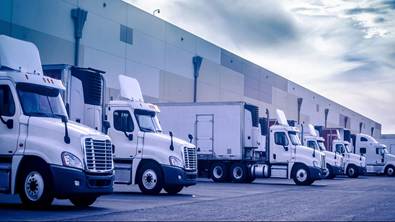
Truck-as-a-Service: Transforming the Landscape of Commercial Transportation
The world of commercial transportation is undergoing a dramatic overhaul, fueled by rapid technological progress, heightened environmental concerns, and shifting economic imperatives. Once dominated by traditional truck ownership and long-term leasing arrangements, the industry is now embracing Truck-as-a-Service (TaaS).
This innovative model redefines trucks as flexible, subscription-based assets that combine vehicles with financing, maintenance, and sophisticated digital tools into one comprehensive package. By separating usage from ownership, TaaS removes many of the conventional barriers to efficiency, sustainability, and growth, laying the groundwork for a more intelligent, eco-friendly, and agile logistics ecosystem.
From Ownership to a Service-Driven Model
For many years, the trucking industry was built on simple premises: companies either purchased trucks outright or entered into long-term leases.
While outright ownership offered full control. It also meant facing high initial costs, unpredictable maintenance expenses, and the risk of rapid asset depreciation. Leasing, though spreading costs over time, still involved binding contracts and uncertainties around residual values.
In contrast, TaaS introduces a paradigm shift inspired by the “as-a-service” revolution seen in software and manufacturing. Here, trucks are seen as upgradable tools rather than static investments.
Providers maintain vehicle ownership and offer access through flexible, subscription-style agreements. This bundle everything from maintenance and telematics to insurance and even charging infrastructure for electric trucks.
This shift allows operators to concentrate on moving goods efficiently while transferring risks like depreciation and downtime to the service provider.
The Pillars of TaaS: Flexibility, Comprehensive Services, and Digital Integration
Here we go:
Flexible Financing and Ownership Structures
TaaS transforms the heavy capital expenditure of fleet management into a predictable, monthly operational cost.
Instead of a significant upfront investment. Operators pay a fee that covers not only vehicle use but also essential services like maintenance and support.
With models ranging from fixed subscriptions to usage-based pricing (such as cost-per-mile). TaaS makes advanced truck technologies, including electric vehicles, accessible to fleets of all sizes. For providers, this recurring revenue model fosters longer-term relationships and incentivizes keeping vehicles in optimal condition.
All-Inclusive Service Packages
The true strength of TaaS lies in its holistic service offerings. Beyond providing the truck itself, these packages address every aspect of fleet management. Proactive maintenance is driven by predictive analytics, reducing the risk of costly breakdowns.
Real-time telematics and IoT-enabled analytics offer insights into vehicle performance, driver behavior, and route efficiency. For electric fleets, additional services include managing charging infrastructure and optimizing energy consumption.
Integrated policies for insurance and regulatory compliance further simplify operations, turning trucks into fully managed assets that operate at peak efficiency.
Seamless Digital Integration
Central to TaaS is the fusion of advanced hardware and cutting-edge software. Digital platforms collect and analyze data from vehicles, drivers, and even external factors.
These factors include weather and traffic, enabling machine learning algorithms to fine-tune everything from maintenance schedules to route planning.
For instance, predictive systems can forecast component failures well in advance, while route optimization tools help cut fuel expenses and delivery times.
In the realm of electric trucks, integrated energy management systems coordinate charging schedules with grid demand, reducing costs and supporting renewable energy goals.
Driving Forces Behind the TaaS Surge
Several key factors are propelling the growth of TaaS:
Sustainability Demands
With stricter emissions regulations—such as those in the EU and California mandating a shift to zero-emission vehicles—TaaS is critical in accelerating the adoption of electric trucks.
By absorbing the high costs of EVs and charging infrastructure, TaaS enables fleets to transition to cleaner operations without the burden of massive upfront investments.
Economic Pressures
Rising fuel costs, labor shortages, and volatile supply chains have squeezed fleet margins.
TaaS offers cost stability by converting large capital expenses into fixed operational fees. Meanwhile providers leverage bulk purchasing and economies of scale to further reduce costs.
Digital Transformation
In an age where real-time tracking and same-day deliveries are becoming standard expectations.
TaaS platforms provide the digital oversight needed to manage operations dynamically adjusting routes on the fly and streamlining maintenance through centralized dashboards.
Scalability Requirements
The explosion of e-commerce and last-mile delivery services demands flexibility.
TaaS allows fleets to scale their operations up or down without the financial strain of owning underutilized assets.
Also, making it easier to adjust capacity during seasonal peaks and troughs.
Real-World Implementations of TaaS
Check these out;
Volvo Trucks’ “Volvo on Demand”
In 2022, Volvo Trucks North America introduced a TaaS program centered on electric vehicle adoption.
The service offers access to Volvo VNR Electric trucks under flexible leasing arrangements. It also includes charging infrastructure, proactive maintenance, and advanced telematics.
Early adopters, such as logistics giant DHL, have reported significant reductions in operating costs when compared to traditional diesel trucks.
Volta Trucks’ Urban Innovation
Swedish startup Volta Trucks has tailored its flagship Volta Zero for urban logistics challenges.
With a design that enhances driver visibility and safety, the fully electric truck is available via TaaS, which also provides access to charging hubs and around-the-clock support in key European cities.
Clients like DB Schenker benefit from a subscription model that covers all operational expenses, facilitating a smooth transition to electric fleets without heavy upfront costs.
WattEV’s Charging-Focused Approach
Based in California, WattEV integrates its electric truck offerings with an extensive network of high capacity charging stations.
The company’s subscription model, which charges based on mileage, is designed to keep costs align with actual usage-a particularly attractive proposition for smaller carriers.
WattEV aims to deploy thousands of electric trucks by 2030, making EVs a viable alternative to diesel vehicles on a large scale.

Challenges on the Road to Widespread Adoption
While TaaS presents immense potential, several obstacles remain:
Financial Exposure for Providers
Maintaining large fleets can strain provider finances due to depreciation and market fluctuations. Innovative funding models, such as partnering with institutional investors or using off-balance-sheet arrangements, are essential to mitigate these risks.
Technological Integration
Merging various systems—ranging from telematics to autonomous driving technologies—demands robust IT frameworks and strong cybersecurity measures to safeguard operational data.
Regulatory Complexity
With diverse policies on electric vehicles, data privacy, and autonomous operations across regions, TaaS providers must develop adaptable systems that comply with local regulations.
Cultural Resistance
Longtime operators used to own their assets may be hesitant to relinquish control. Building trust through transparent service-level agreements (SLAs) and clear communication is key to overcoming this inertia.
Market Outlook
The Truck-as-a-Service (TaaS) market is experiencing unprecedented growth, having been valued at US$ 23.1 billion in 2022.
This rapid expansion is driven by the increasing demand for flexible, subscription-based transportation solutions that integrate vehicles, maintenance, telematics, and digital tools.
With a projected compound annual growth rate (CAGR) of 25.0% from 2023 through 2031, TaaS is redefining the logistics landscape by offering a cost-effective and scalable alternative to traditional fleet ownership.
This shift is underpinned by broader trends in digital transformation and sustainability, enabling carriers to streamline operations while mitigating the risks associated with asset depreciation and unpredictable maintenance costs.
By the end of 2031, the TaaS market is forecasted to soar to an estimated US$ 172.4 billion, reflecting its growing role as a cornerstone of modern commercial transportation.
This impressive market outlook signals a transformative era where technological innovations—ranging from advanced telematics to electrification and autonomous driving—converge to revolutionize fleet management.
As industry stakeholders such as OEMs, fleet operators, and technology providers continue to invest in these cutting-edge solutions, the TaaS model is set to drive significant efficiencies and promote a greener, more agile logistics ecosystem for years to come.
Looking Ahead: Autonomous Innovations and Expanded Service Models
The evolution of TaaS is poise to incorporate autonomous driving technology, potentially eliminating driver costs and further enhancing safety.
Companies like TuSimple are already piloting self-driving TaaS models, combining automated highway operations with human oversight for first- and last-mile delivery.
This blend of automation and human input—sometimes termed “driver-as-a-service”—could lead to substantial cost reductions.
Moreover, the concept of Capacity-as-a-Service (CaaS) looms on the horizon, where providers might manage entire supply chains—from production to last-mile delivery—under one unified subscription model.
Imagine a future where an OEM like Tesla not only supplies electric trucks but also offers integrated solutions that include warehouse robotics, advanced route optimization, and even drone deliveries.
Analysts foresee the TaaS market surpassing $160 billion by 2034, driven by electrification and autonomous innovations.
Success in this burgeoning field will depend on providers’ ability to expand their infrastructure, form strategic partnerships, and maintain high levels of service reliability.
Strategic Considerations for a TaaS-Driven Future
OEMs should pivot from product sales to service-oriented models, collaborating closely with technology firms and investing heavily in EV and AV research.
Fleet Operators are encourage to select TaaS providers who offer clear, transparent pricing structures and robust SLAs, ensuring reliability and efficiency.
Technology Partners must continue to innovate in areas such as AI, battery management, and cybersecurity to underpin the TaaS framework.
Governments play a critical role by accelerating investments in charging infrastructure and standardizing regulations to support the scalability of TaaS solutions.
Conclusion
In sum, Truck-as-a-Service is not just a disruptive trend but a fundamental reimagining of commercial transportation—one that promises enhanced operational agility, lower costs, and a significant step forward in sustainability.




